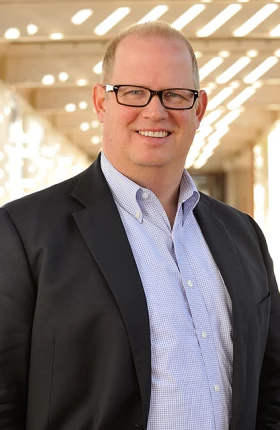Relationships with colleges can help businesses land great talent, but they can be tricky to establish and navigate. Taking seven actions can make them work.
Partnerships between higher-education institutions and employers can be invaluable for helping businesses respond to growing talent needs. They can offer employers a reliable way to cultivate an educated and trained workforce. They can cut employers’ training costs. And they can improve productivity as well as retention. At the same time, they can help states and regions become more competitive.
For all their benefits, though, higher ed–employer partnerships can be challenging to implement and sustain. Higher-ed institutions and employers often speak different languages around timelines, urgency, structure, and governance. In some cases, they may point fingers at each other over who is responsible for the talent gaps. And they find themselves guessing when it comes to predicting future market needs.
The reality is that there is far greater potential for closing the talent gap when both parties work closely together. To make sure that the opportunity doesn’t get lost in translation, higher-ed institutions and employers need to create partnerships by engaging in a mutually beneficial and transparent design process, anchored by data that includes projections of workforce demand, pro forma financial models, and the identification of capacity bottlenecks on both ends. And most important, both parties must consider the perspectives of students—not only what kinds of job opportunities they’re looking for but also what types of academic programs and financial aid packages will ease their transition into the work world.
In this article, we discuss how to enable these partnerships and avoid pitfalls from the perspectives of leaders in higher ed and business.
The Growing Demand for Talent
Even before the start of the Great Resignation, organizations in every industry faced growing recruitment and retention issues. According to a 2020 BCG survey, these issues are especially troubling in digital fields, where 40% of employees were actively job hunting and 75% of employees expected to leave their current job in the near future. However, other industries are also facing these challenges. In 2020, the US Bureau of Labor Statistics flagged the need for more nurses, estimating an additional 3.7 million new hires in the ten-year period from 2020 through 2030. Furthermore, the half-life of skills—the time it takes for a skill to lose half of its initial value—has dropped to less than five years.
To secure and expand talent pipelines, employers have the choice to go wide or go deep.
What can employers do to secure and expand their pipelines of new talent? They have the choice to go wide—to recruit workers from across regions who will work remotely. They can also choose to go deep—to build talent partnerships with higher-ed institutions in their locales.
The growth in remote work means that some employers no longer have to limit their recruiting efforts to their local market. The benefit of going wide is that it opens up vast pools of talent for jobs that companies need to fill. Going wide also allows those who choose to work remotely to do so, which can improve retention. And this approach can help extend the recognition of a company’s employer brand to other regions.
Yet going wide calls for careful planning: companies must excel at selecting the hard and soft skills that they need from a far wider pool of talent that many are not used to navigating. And it can be challenging to build and strengthen loyalty among a widely dispersed, remote workforce.
The option to go deep includes expanding partnerships with higher-ed institutions in areas where the effects of a company’s local brand awareness, selection processes, affiliation opportunities, and alumni network can be highly advantageous.
A 2020 BCG-Google survey of business leaders shows the need for closer collaboration between higher-ed institutions and employers:
- Only 36% believe that higher-ed institutions give their graduates adequate training.
- Seventy percent think that higher-ed providers should be more involved in job training, disrupting private recruiting and training companies.
- Eighty-one percent believe that better aligning educational curricula with job openings and skill gaps could resolve many of the skill mismatches that employers face.
- Eighty-eight percent think that higher ed could help potential hires acquire advanced technical skills, soft skills, and industry-specific knowledge.
A Higher Ed–Employer Partnership, Defined
What exactly is a higher ed–employer partnership? It is an agreement between a higher-ed institution and an employer to address talent shortages in key job categories, such as data science, digital technologies, nursing, programming, and renewable energy. Some employers partner with multiple institutions.
The particulars of such agreements differ depending on the organizations, but the employer typically commits to hiring a certain percentage of graduates in one or more disciplines (providing a clear demand signal), while the institution commits to increasing the number of graduates in one or more disciplines over time. These agreements also typically involve a set of joint activities. For example:
- Workforce Planning. The institution and the company work together to forecast talent baselines—the number of students that the institution expects to graduate in one or more disciplines and the number of graduates that the employer expects to hire in those disciplines. The institution and employer also identify and prioritize the hard and soft skills that these graduates will need.
- Academic Program Design. The two parties codesign the curriculum and jointly appoint faculty for their program. They determine the number and purpose of employer-sponsored internships and applied training programs. And they figure out the facilities, labs, faculty, and support services needed to accommodate an increasing number of students and to establish joint research or innovation hubs that involve students.
- Student Recruitment. The institution and employer outline the steps required to increase the number of graduates, including performing market research on target student populations, securing funding for student financial aid, and recruiting students.
East Tennessee State University’s partnership with BlueCross BlueShield of Tennessee is an example of an agreement to increase the number of students graduating with technology degrees. (See the sidebar “A Tennessee Partnership Builds a Pathway to Tech Jobs.”)
A Tennessee Partnership Builds a Pathway to Tech Jobs
A Tennessee Partnership Builds a Pathway to Tech Jobs
The partnership between BCBST and East Tennessee State University (ETSU) recently welcomed its first students in fall 2022. The development of local technology talent meets a critical business need for BCBST and fulfills its commitment to its communities. BlueSky Tennessee Institute’s students can earn a bachelor’s degree in computing from ETSU in an accelerated, accredited 27-month program (including summers). Qualified graduates may get job offers from BCBST upon successful completion of the program.
The entire program is conducted on site at BCBST headquarters in Chattanooga. Students take classes and work on real-world BCBST projects. In addition, BSBST employees mentor the students. The partnership also has a proactive initiative to recruit from high schools in lower-income areas of Chattanooga.
And a partnership between Michigan’s Grand Valley State University (GVSU) and BHSH System showcases an agreement to increase the number of graduates with a degree in nursing. (See the sidebar “A Michigan Partnership Is Set Up to Solve the Regional Nursing Shortage.”)
A Michigan Partnership Is Set Up to Solve the Regional Nursing Shortage
A Michigan Partnership Is Set Up to Solve the Regional Nursing Shortage
GVSU will expand financial aid, curriculum enhancements, student support services, simulation enhancements, and clinical experiences. “These talent gaps can hold us back or put us at risk,” explained the president of GVSU, Philomena Mantella. “We have many dedicated and talented students who want to pursue nursing, but we needed the creativity and assistance of our partners at BHSH to make the profession possible and affordable for more students. This program is a huge leap forward and a model for future partnerships.”
Some talent partnerships include new or expanded student incentives. For example, some employers offer students forgivable loans if they finish the program and take a job with their company. To have a loan completely forgiven (or paid in full), a student must remain employed at the company for a certain number of years. If a student leaves before that time, the amount forgiven is prorated.
Why It’s Hard to Develop Talent Partnerships
Forming solid partnerships between higher-ed institutions and employers is more complicated and takes more time than typically anticipated. We see several primary challenges.
Workforce and Timeline Disconnects. Many employers struggle to make workforce projections—specifically, the types of skills that they will need and the number of employees with those skills who they will seek to hire. As a result, many organizations default to just-in-time hiring via staffing agencies or outsourced partners. Unfortunately, that approach not only favors lateral, experienced hires (rather than new graduates) but also makes it very difficult for higher-ed institutions to anticipate the number of qualified graduates needed in various fields.
Meanwhile, higher-ed institutions typically require at least three years to build new talent programs. The timeline usually includes one year to design or adapt an existing program of study, obtain state accreditation, and hire program leadership. Then, the institution requires a year to recruit the incoming group of students and another two to four years to graduate a cohort. That pace is typically too slow to earn the commitment of most employers that have not engaged in serious strategic workforce planning.
Decentralized Engagement. Currently, most higher ed–employer partnerships require the company to work with various administrative and academic departments across the institution to arrange internships, recruiting events, joint research projects, and corporate sponsorships. For example, an institution may have one recruiting schedule for MBA graduates that is coordinated through the MBA program, another for undergraduates that is arranged through the undergraduate career office, and another for PhD students that is set via a virtual recruitment office. Employers are often just as decentralized: business units may have their own recruitment projections and processes, with little if any coordination among them across the company. Such decentralization can be a significant deterrent to effective partnerships.
Many colleges want to help fill talent pipelines, but they are frustrated by businesses’ inability to provide only broad job categories.
Difficulties Describing the Competencies Needed. Most employers have not created consistent skill taxonomies or, if they have, kept them updated. As a result, it is difficult for them to articulate the competencies needed and give feedback regarding an institution’s curricula and whether it is meeting their needs. For their part, many community colleges and public regional four-year institutions want to help fill employers’ talent pipelines, but they are often frustrated by the inability of many businesses to describe what they need beyond broad job categories, such as software developer.
Compounding these challenges is the short half-life of technical skills—employers struggle to anticipate the evolution of skill sets. For example, while Python is now the standard programming language for data science, the standard was R a few years ago, and SAS or other object-oriented programming languages before that. As a result, university deans must make their best guesses about what competencies will be in demand.
Pushback from Stakeholders. It is possible but often difficult to gain agreement on forming a partnership among the administration, staff, faculty, and board members of an institution. For example, university faculty members sometimes voice the concern that accepting more students into a given program will increase teaching workloads, leaving less time for research.
Another concern—which can come from a variety of stakeholders—is that accepting more students will mean accepting weaker students, thereby adversely impacting school rankings. Yet, it’s possible to overcome such resistance. Says Philomena Mantella, president of GVSU: “[Agreement] often comes from appealing to faculty’s student-access mission.”
Uncertain Student Demand. College admission offices know how to fill the applicant pipelines for their current programs. But these offices are less clear about how to attract students (including adult learners and those who already have a degree) to the new or modified programs; they do not yet know the messaging and financial aid that will best resonate with prospective students in order to maximize enrollment. As a result, it’s not unusual for employers and institutions to guess at the size of the demand or to assume that if they build the program, students will come.
Actionable Strategies for Designing Successful Partnerships
So, what are the ingredients for a best-in-class higher ed–employer partnership? What does it take to build the linkages that keep filling talent pipelines year after year? BCG has identified seven key actions.
Ensure leadership and honest dialogue at the topmost level. We have found that the most successful new higher ed–employer partnerships are not delegated to a division at a company and a department at an institution. Rather, they are driven from the top via a trusted relationship built between the CEO of a company and the president or chancellor of a college or university.
GVSU’s Mantella notes, “Many CEOs and presidents say they are committed to addressing the talent pipeline but do not make it a personal or institutional priority.” Connection, trust, and time between these two parties are critical to successful partnerships. Also, the top executives on both sides should not shy away from tough issues. Adds Mantella: “It is important to ‘get to no’ early instead of engaging in lots of discussion. Nonstarters must be defined early on.”
It makes sense to build on an existing relationship between a CEO and a college president, but that doesn’t guarantee a solid, enduring partnership. “The new partnership will demand leveraging the strengths of the relationship and navigating the challenges,” says Leeanna McKibben, the chief of staff in the Office of the Senior Vice Chancellor for the Health Sciences at the University of Pittsburgh. “This can be helped by clearly defining the partnership, understanding the needs and capabilities of each other, establishing complementary and mutual goals, and carefully identifying the necessary resources and requirements.”
Build a clear business case using hard data and specific, measurable objectives. A higher-ed institution and an employer that are considering a partnership often already have some sort of talent pipeline between them. Each side should start collecting data for the business case to further support that pipeline. For example, it would be important to know the number of graduates that have been recently hired by the employer, the programs they were in, and their roles when they joined the company. Ideally, the data could continue to track those graduates deeper into their careers so that the employer can speak to their retention and performance.
Additionally, both sides should collect qualitative input, including feedback from career services and academic units on the higher-ed side and from HR and hiring managers on the employer side. This information can help provide a baseline sense of the strengths and challenges in the relationship, as well as clarify specific forward-looking opportunities. Qualitative input can also spark open and honest conversations about each side’s responsibilities.
From here, each side should voice clear aspirations for what the partnership will deliver. BlueSky Tennessee Institute’s executive director Bradley Leon puts it this way: “Businesses need to step up to better define their needs for future strategic workforce talent and ‘skilling’ in order for higher ed to be able to respond effectively.”
Each side should share its data and jointly develop a business case for the partnership and include measurable objectives.
Next, the parties should clearly and candidly exchange information, including data about strategic workforce planning and skill gaps on the employer side, and on the higher-ed side, market research on the size and motivations of the target student segments. With each side sharing its data, both can jointly develop a business case for the partnership. That case should include specific, measurable objectives—for instance, the number of students who will complete the new or enhanced academic programs and be hired by the employer each year. There may also be specific objectives related to the diversity of students hired, the mix of roles they are hired for, and the expected retention and performance of new hires once employed.
The business case should also lay out a clear set of financial projections that cover the upfront and ongoing costs for the employer and for the institution, as well as the student enrollment and employment targets that would need to be met in order to be financially sustainable. Higher ed–employer partnerships can involve significant financial commitments to cover the expansion of facilities, faculty, and internships, as well as some form of student financial inducements paid by the employer. For example, loan reimbursements can reduce students’ concerns about heavy financial outlays and opportunity costs. Because partnerships can cost tens of millions of dollars, it is crucial to be able to quantitatively show a return on their investments.
Of course, it’s unlikely that the business case can be built on perfect data. That should not be a barrier to getting started. In fact, the business case can include market research and test-and-learn pilots. The market research should seek to understand the extent of student demand and what messaging will best resonate to maximize enrollment in these employer-aligned programs.
Assign a joint, nimble team to oversee the partnership. Instead of expecting the various internal departments of each partner to figure out how to proceed, the CEO of the company and the president or chancellor of the college or university should create a centralized engagement team. This means standing up a joint, nimble team, with representatives from each organization, to navigate relationships across the relevant departments and stakeholders on each side.
Expand early hands-on opportunities for students. One particularly promising step that effective partnerships take is to systematize and grow their applied training programs (including internships, apprenticeships, and cooperative education initiatives) with their higher-ed partners.
Offering applied training programs as part of the curriculum benefits the employer, the institution, and the student. The programs expose potential hires to a job, increasing their chance of being chosen and reducing the employer’s training burden later on. They eliminate as much as a year of onboarding time, boosting the employer’s productivity and closing talent gaps faster. And they prepare and screen potential hires, reducing employee attrition and the associated costs. For institutions, offering hands-on opportunities improves their value proposition to prospective students, which helps increase enrollment.
Let company employees work at the institution—and let faculty work at the company. Talent partnerships may focus on students who follow the path to becoming employees of the company, but win-win opportunities exist for the company’s employees and faculty members too.
For example, the company may have employees who are qualified to teach. This is often the case in the health care industry. Institutions can tap into this resource to support increased enrollment. The University of Pittsburgh’s McKibben notes that many successful partnerships jointly appoint willing employees at the corporate partner to take on teaching or applied training responsibilities. This practice can reduce employee burnout and improve creative thinking. It can also improve retention by letting employees develop a new competency, gain the prestige of being appointed to the adjunct faculty, and, sometimes, raise their salary. Students benefit from the richness of the real-world experience of corporate educators.
Enabling company employees to teach and letting faculty members have roles at the company benefits them and the students.
Similarly, enabling faculty from the institution to take advantage of opportunities at the company can also have significant benefits, according to Christine Cruzvergara, chief education strategy officer at Handshake, a popular digital career-services platform for students. Such opportunities can include joint research, advisory roles, or more informal shadowing. “It engages faculty beyond academia, giving them exposure to industry where they get to see the problems people in industry face and can incorporate those examples into the classroom from their own experience. It also provides faculty with direct feedback from their alumni on what curricular lessons have been most useful on the job.”
Design partnerships with scale and replication in mind. It is unlikely that a single partnership will meet all the needs of either the employer or the higher-ed institution. So, it’s important to consider not only how a partnership may grow but also to think about roles for other prospective partners. A case in point: BlueSky Tennessee Institute currently partners only with East Tennessee State University, but BlueSky’s Leon says his organization has always been open to the idea of working with other employers too.
Large employers, such as hospital systems or technology companies, often require varied types of partnerships with multiple higher-ed institutions to fill their talent gaps. Multiple partnerships also reassure corporate leaders that they are not betting everything on one institution’s ability to expand.
Many-to-many partnerships—where multiple employers are working with multiple higher-ed institutions—can also be highly effective for the participating organizations. And from the standpoint of a city, county, or state, these partnerships can be key elements in an ecosystem strategy, especially when coordinated by a central entity, such as an economic development corporation, a nonprofit, or a business council.
In addition to considering one-to-many and many-to-many partnerships, companies and higher-ed institutions should think about how they could form future partnerships more efficiently—where could they follow a consistent template to more easily replicate the process. Creating a partnership agreement, building the business case, assigning a joint team, and expanding hands-on student opportunities can all benefit from that template. In some cases, structural changes to the form of the partnership can enable nimbleness and impact. GVSU’s Mantella says that her previous institution, Northeastern University, created a 501(c)(3) organization to enable faster scaling of partnerships.
Tap into states’ economic development funds. In the US, many states have received federal funding, including from the American Rescue Plan Act (ARPA) of 2021. They are using the funds to drive economic vitality in several ways, such as to spur higher ed–employer partnerships and workforce reskilling programs, as well as to offer financial incentives to encourage students, higher-ed institutions, and employers to stay local. In recent years, site selection for businesses has been much more influenced by access to local talent. Economic development teams know that, and they understand clearly that in the world of remote work, talent is more fluid than ever. Accordingly, states have distributed roughly 15% of their ARPA State Fiscal Recovery Fund allocations to workforce development, economic development, and education. Businesses and institutions should keep an eye on what funding their states have available for economic development and understand how they plan to use it.
To close talent gaps strategically and thoughtfully, it will be essential for businesses to enter partnerships with higher-ed institutions. Such partnerships can enable employers to expand their talent pipelines, improve employee productivity and retention, and boost competitiveness. At the same time, these partnerships can enable higher-ed institutions to show a more compelling return on investment for prospective students, thereby increasing enrollment and tuition revenue.
However, higher ed–employer partnerships are no overnight fix. They require true commitment to avoid structural and process missteps. They need a data-supported business plan and a financial arrangement that works for both parties. And most important, they must put the needs of prospective students first.
The authors thank the following for their contribution to this article: Philomena Mantella, president of Grand Valley State University; Bradley Leon, executive director of BlueSky Tennessee Institute; Leeanna McKibben, chief of staff in the Office of the Senior Vice Chancellor for the Health Sciences at the University of Pittsburgh; and Christine Cruzvergara, chief education strategy office at Handshake. This article builds on a panel discussion held at the ASU + GSV Summit in April 2022.






